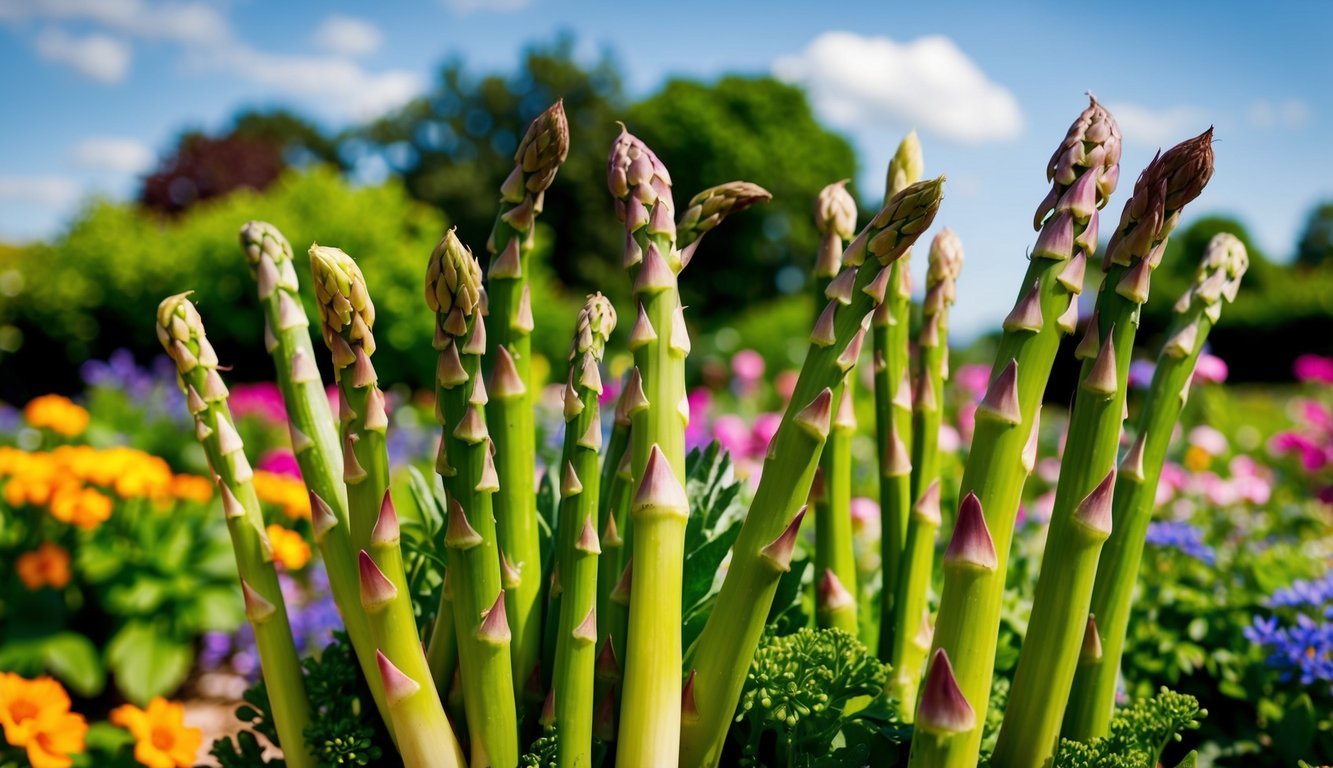
Growing asparagus can be a rewarding endeavor that requires both patience and care.
Known for its grace and long lifespan in the garden, asparagus can truly shine in your vegetable patch.
However, it has unique needs that can complicate companion planting.
To enjoy a bountiful harvest after nurturing your crops for two to three years, it’s important to be selective about what you plant alongside your asparagus.
Some plants get along splendidly with asparagus; others, however, can hinder its growth.
Here’s a list of ten plants you should keep your asparagus far away from.
Plants to Avoid
- Potatoes
Potatoes may thrive in cooler conditions, but they share a significant appetite for soil nutrients with asparagus.
Both plants establish extensive root systems and have lengthy growing seasons, leading to fierce competition for resources.
This rivalry can stunt the growth of asparagus and even attract pests, such as asparagus beetles, which thrive on potatoes.
- Carrots
Carrots are versatile, but they need ample space underground to flourish properly.
When planted too close to asparagus, they can cause thin asparagus spears and misshapen carrots.
Moreover, harvesting mature carrots near young asparagus can disturb delicate root structures.
- Onions
Though onions are compact, they release substances that can negatively affect asparagus.
If onion tissues suffer damage—be it from pests or during harvesting—those chemicals may seep into the soil, impacting the nearby asparagus plants.
- Garlic
Garlic does not play well with asparagus.
The compounds that garlic leaches into the soil may inhibit the growth of asparagus, while garlic itself also competes for key nutrients, making it a poor neighbor.
- Leeks
Another allium to watch out for is leeks.
They share similar root systems and nutrient needs with asparagus, creating a scenario where both plants struggle for resources.
Their competition can stunt each other’s growth, so it’s best to keep them apart.
- Tomatoes
While tomatoes can enhance your garden’s aesthetic, they bring along a host of pests and can monopolize sunlight and nutrients.
Asparagus fares better in an environment free from the complications that tomatoes introduce.
- Mint
Mint is famously vigorous and can take over a garden space quickly.
Its invasive tendencies can outgrow asparagus above the soil, while its sprawling root system may threaten to choke the asparagus plants below.
- Corn
Corn can disrupt the delicate underground ecosystem that asparagus depends on.
Their roots vie for the same space in the soil, which can displace asparagus roots.
Corn also tends to attract pests like armyworms, which can threaten your asparagus as well.
- Chives
Though they have shallow roots, chives give off chemicals that may impair asparagus growth.
It’s wise to avoid planting these two in close proximity to each other for the best results.
- Shallots
Shallots thrive in nitrogen-rich soil, a condition that can stifle asparagus growth.
Planting shallots near asparagus can also invite unwanted pests like thrips or onion flies, making gardening even trickier.
Impact on Growth
By steering clear of these ten plants, you can cultivate a healthier environment that supports your asparagus, ensuring it thrives and yields a robust harvest.
Happy gardening!
Source: Marthastewart.com

